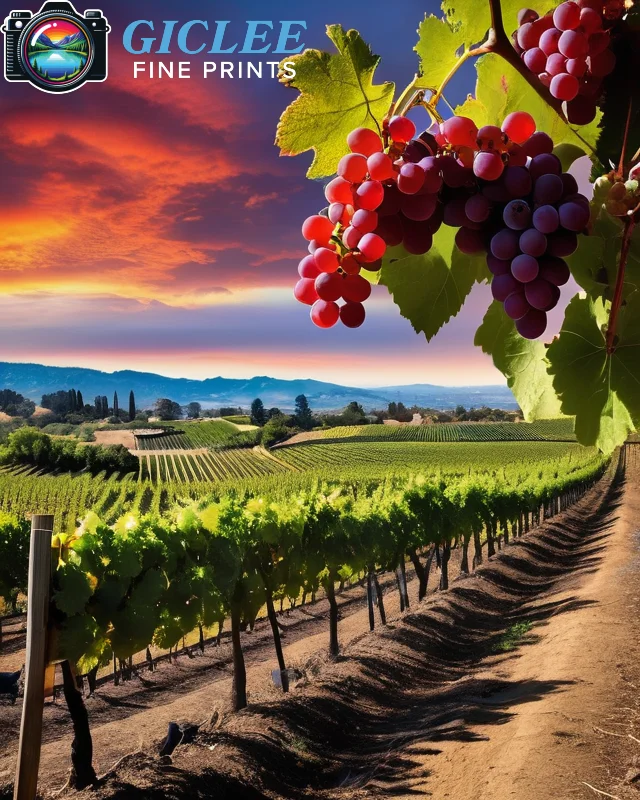
Capturing high-quality photos of your artwork is crucial for creating giclee Fine prints or any other professional reproductions. Proper photography ensures that the intricate details, colors, and textures of your original piece are preserved, resulting in stunning prints that do justice to your artistic vision. Whether you’re a seasoned photographer or a beginner looking to photograph your artwork, mastering the techniques for artwork photography can dramatically improve your printing results.
Choose the Right Lighting: The Foundation of Good Photography
Lighting plays a crucial role in capturing your artwork accurately. Poor lighting can result in shadows, glare, or washed-out colors, making it difficult to replicate the true look of the original piece.
Key Tips:
- Use Natural Light: The best way to light your artwork is by using natural, indirect light. Set up your artwork near a window or in a well-lit room where the sunlight is bright but not direct. Avoid direct sunlight as it can cause harsh shadows and glare on your artwork.
- Diffuse Artificial Light: If natural light is unavailable, use soft, diffused artificial light. You can achieve this by using softbox lights or covering your light source with a diffuser, such as white fabric, to soften the light. This helps evenly illuminate your artwork without creating harsh highlights or shadows.
- Position Lighting at a 45-Degree Angle: Position your lights at a 45-degree angle from the artwork on either side. This ensures that the light spreads evenly across the surface of the artwork, eliminating glare and shadows.
Best For:
- All types of artwork, including paintings, illustrations, and photography, where color accuracy and detail preservation are essential.
Set Up Your Camera for High-Resolution Shots
To achieve optimal printing results, it’s essential to photograph your artwork in high resolution. Using the right camera settings will ensure you capture all the fine details and colors that are critical for high-quality prints.
Key Tips:
- Use a High-Resolution Camera: A DSLR or mirrorless camera with a resolution of at least 24 megapixels is ideal for photographing artwork. Higher resolution ensures that even large-scale prints retain sharpness and detail.
- Set the ISO Low: Keep your ISO setting low (around 100-200) to avoid introducing noise or grain into your photos. A low ISO will result in cleaner, sharper images, which are essential for producing high-quality prints.
- Choose a Narrow Aperture: Set your camera to aperture priority mode and select a narrow aperture, such as f/8 or f/11. This increases the depth of field, ensuring that the entire surface of your artwork is in sharp focus.
- Use a Tripod: Mount your camera on a tripod to keep it steady and aligned with the artwork. A tripod will prevent any blurring caused by camera shake, especially in low-light conditions or when using a slower shutter speed.
Best For:
- Large-scale artwork or pieces with intricate details that require a high level of clarity and sharpness for giclee printing or fine art reproductions.

Ensure Proper Alignment and Framing
Properly aligning your artwork within the frame of your camera ensures that your final image is distortion-free and accurately represents your original piece.
Key Tips:
- Keep the Artwork Parallel: Make sure the artwork is perfectly parallel to the camera lens. If the artwork is tilted, it will appear distorted, and straight lines may become warped in the photograph. Use a level to ensure the artwork is aligned evenly with the camera.
- Fill the Frame: Fill as much of the camera’s frame as possible with the artwork, leaving minimal space around the edges. This reduces the amount of cropping needed during editing and ensures you capture the full piece in high resolution.
- Use a Spirit Level: Use a spirit level (bubble level) to make sure your camera is perfectly horizontal. This prevents any tilting or misalignment that could lead to distortion in the final image.
Best For:
- Paintings, illustrations, and photography that need to be captured with precise alignment to avoid any distortion during printing.
Color Accuracy: Balancing Colors for Print
Capturing the colors of your artwork accurately is essential for producing high-quality prints that match the original piece. Improper color balance can lead to prints that look washed out or oversaturated.
Key Tips:
- Set White Balance: Adjust your camera’s white balance to match the lighting conditions. If you’re using natural light, set your white balance to “daylight” mode. For artificial light, use the appropriate setting for incandescent or fluorescent lights. Alternatively, set a custom white balance using a gray card to achieve accurate color representation.
- Shoot in RAW Format: Always shoot in RAW format, as it preserves all the data captured by the camera’s sensor. RAW files give you greater flexibility in post-processing, allowing you to adjust exposure, white balance, and colors without losing image quality.
- Use a Color Calibration Tool: Consider using a color calibration tool to ensure accurate color reproduction. Calibration tools can help you adjust your monitor and camera settings to capture and display colors as true to life as possible.
Best For:
- Artwork with bold colors or subtle color gradients where color accuracy is crucial for high-quality giclee prints or fine art reproductions.

Editing Your Photos for Optimal Printing
Post-processing your photos is a key step in preparing your images for printing. Editing allows you to fine-tune colors, exposure, and sharpness, ensuring that your artwork is print-ready.
Key Tips:
- Crop and Straighten: Use editing software like Adobe Lightroom or Photoshop to crop and straighten your image, ensuring that the artwork is framed correctly and free from any distortion.
- Adjust Exposure and Contrast: Fine-tune the exposure and contrast to ensure the image is well-balanced. Be careful not to overexpose or underexpose the image, as this can affect print quality.
- Enhance Color Accuracy: Use the color calibration data collected during the shoot to adjust the colors of the image. Make sure the colors of the photographed artwork closely match the original piece.
- Sharpen the Image: Apply light sharpening to enhance details without over-sharpening, which can lead to an unnatural look. Keep in mind that too much sharpening can introduce artifacts in the final print.
Best For:
- Artists and photographers who want to ensure their artwork or photography is optimized for printing with the highest possible quality.
Avoid Glare and Reflections
Glare and reflections can be a common issue when photographing artwork, especially if you are working with glossy finishes, glass frames, or highly reflective surfaces. Eliminating glare ensures that no unwanted highlights interfere with the final photo.
Key Tips:
- Adjust Lighting: Ensure your light source is positioned at an angle to avoid direct reflection on the artwork. Using diffused lighting will also minimize glare and soften highlights.
- Use a Polarizing Filter: If glare persists, try using a polarizing filter on your camera lens. Polarizing filters help reduce reflections from glossy surfaces and glass, making it easier to capture a clean, glare-free image.
- Remove Glass from Frames: If your artwork is framed under glass, remove the glass to eliminate any reflections before photographing. If this isn’t possible, adjust your lighting and angle to minimize reflections.
Best For:
- Photographs and artwork under glass or with shiny, reflective surfaces where glare may impact the final image quality.
Contact Us
Our address is: 3816 Pioneer Trail Ste #3, South Lake Tahoe, CA 96150
Email: Info@gicleefineprints.com
FAQs
Both natural and artificial lighting can work well. Natural, indirect light is ideal for soft, even illumination, while diffused artificial light with softboxes or light diffusers also works well if natural light isn’t available.
Accurate color representation ensures that the print matches the original artwork, especially for giclee prints or fine art reproductions, where color fidelity is crucial.
Yes, editing is essential for cropping, straightening, color correction, and adjusting exposure to ensure your photo is print-ready and matches the original artwork.


